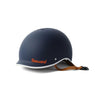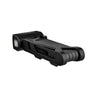Sometime last year, we talked about the top ten features to look for in an electric scooter. It covered all the core elements of a good e-scooter—a great resource that served as a valuable guide for first-time e-scooter buyers.
But what about electric bikes?
Choosing the right e-bike can be a game-changer in your daily commute or off-road adventures. You’ll need to be familiar with important features, like motor power, battery, and throttle capability. Plus, there are more factors to consider, including bike class and frame type.
Now, if this seems to be unfamiliar territory and you’re unsure where to start, don’t worry! This guide will help you make an informed decision so you can find the perfect electric bike that suits your lifestyle.
In no particular order, here are the essential considerations to keep in mind when choosing an electric bike.
Content:
- Type and Class
- Frame Type
- Motor Power
- Range and Battery Capacity
- Maximum Load
- Safety Features
- Brand Reputation
Key Features to Consider in an Electric Bike
Electric Bike Type and Class
The process of choosing an electric bike ideally begins with identifying your riding needs and requirements. There are many types of e-bikes, each suited for a specific purpose, but here are the most common:
- Electric Road Bike: Lightweight electric road bikes are designed for speed and efficiency on smooth paved surfaces.
- Off-Road Electric Bike: Off-road electric bikes, which include fat-tyre e-bikes and e-mountain bikes, are equipped with suspension systems, grippy tyres, and powerful motors to climb hills and tackle rugged terrain.
- All-Terrain Electric Bike: An all-terrain electric bike (one example of which is the electric gravel bike) offers a balance between road and off-road capabilities to cover both weekday commutes and weekend adventures.
- Electric Cargo Bike: Built to safely carry heavy loads, a good electric cargo bike is perfect for transporting packages and groceries, running errands, and even taking kids around the neighbourhood.
- Folding Electric Bike: A folding electric bike features a folding frame that allows for easier storage in apartments, cars, or even on public transport.
Along with identifying the right type of ebike for you, understanding e-bike classes is also crucial. Since the class defines top speed and power delivery, it directly impacts both the bike's legality in your area and your riding experience.
|
CLASS |
SPEED LIMIT |
PEDAL ASSISTANCE |
THROTTLE |
LEGALITY |
|
1 |
32 kph |
Yes |
No |
Legal in most areas where traditional bikes are allowed |
|
2 |
32 kph |
Yes |
Yes |
May not be legal in areas that prohibit throttle-operated bikes |
|
3 |
45 kph |
Yes |
No |
Contact your state or local authorities |
Most Aventon electric bikes, such as the Aventon Level.2, come out of the box as a Class 2 ebike. However, they can be unlocked to a Class 3 ebike to reach speeds of up to 45 kph. Conversely, if you’re riding in an area where throttles are prohibited, these bikes can also be operated with the throttle removed.
Frame Type
Next, you’ll also find that many of our electric bikes, like the Aventon Aventure.2, are available in two frame types: step-over and step-through. What are these and what do these mean to you, the rider?
Step-over frames tend to be more popular. Characterised by its classic diamond-shaped geometry, a step-over bike is designed for efficiency and handling. Because it handles various terrains and inclines well, it is ideal for riders who prioritise performance.
However, step-over frames are not for everyone. For example, shorter or heavier riders, or individuals with limited mobility, may find riding a step-over ebike to be quite challenging.
For these riders, the step-through frame would be much better. Designed for easier mounting and dismounting, it is perfect for those who value comfort and accessibility. It is also ideal for riders who need to hop on and off their ebikes frequently, like delivery riders.
Motor Power
The power of an e-bike’s motor is measured in watts (W) and affects its ability to quickly accelerate, reach and maintain specific top speeds, and climb hills.
If you’re looking to commute on flat terrain, or if you only need an electric bike for casual riding, a low power ebike (250W to 500W) like the Aventon Soltera.2 would suffice. However, if you need to scale inclines, reach higher speeds, or cover more range, you would need a high-power ebike with at least 750W of power output.
Range and Battery Capacity
Battery capacity, on the other hand, determines your electric bike’s potential range on a single charge. Measured in watt-hours (Wh), higher capacity in a battery translates to more distance covered.
Range often varies depending on the purpose of the e-bike. For example, electric bikes that are meant to carry cargo like the Aventon Abound are not capable of reaching the same range as eMTBs like the Aventon Ramblas (80 km vs.128 km).
However, it is important to know that while an electric bike is capable of reaching its advertised range, it is affected by real-world factors like rider weight, terrain, speed—even the weather.
Maximum Load
Electric bikes have weight limits that include you, any cargo, and accessories. While some e-bikes are built for heavy hauling, most can be outfitted with racks and bags for extra gear. Hence, the additional weight that comes from accessories and baggage must also be considered when choosing an e-bike.
Here's why the weight limit matters: exceeding it can strain the frame and motor, which affects performance and potentially compromises safety.
So, don’t just consider your weight—think about what you'll typically carry while riding. If you commute with a backpack or plan on grocery shopping by e-bike, factor that weight in when choosing your ride.
Aim for an e-bike with a weight limit that accommodates your needs and leaves some wiggle room to ensure safe and optimal performance.
Safety Features
Safety should be your top priority when choosing an electric bike. While different e-bike types may come with different safety features, these are the essentials to look for:
- Brakes: Whether hydraulic or mechanical, reliable brakes are crucial for safe stopping power in all riding conditions.
- Lights: Front and rear lights ensure visibility during low-light conditions. If you are commuting in traffic, also consider getting a bike with turn signals.
- Suspension: While not necessary in many electric road bikes, suspension is beneficial for improving handling on off-road terrain.
- Fenders: Fenders or mudguards are optional, but they are very helpful in protecting you and your bike from splashes and road debris.
On top of everything, remember to always wear a helmet when riding. It is an absolute necessity, and it’s crucial to choose a safety-certified helmet with durable material, good fit, and sufficient ventilation.
Brand Reputation
Finally, choosing a reputable e-bike brand goes beyond just the name. These established global brands prioritise your safety by ensuring their bikes meet the highest standards with certifications like UL. You are also assured they only use high-quality components for reliable performance and back it up with excellent customer support.
The benefits extend even further, as with a trusted brand, you’ll have easier access to parts when your bike needs maintenance down the road. Plus, these brands are more likely to offer compatible accessories in case you want to customise your ride in the future.
Choose Your Next Electric Bike from Electric Kicks
At Electric Kicks, we exclusively carry electric bikes from reputable brands. This means you can be confident you're getting a safe, high-quality bike with exceptional customer service, warranty, and after-sales support—all to ensure every ride is a smooth one.
More importantly, our commitment goes beyond our products. Our knowledgeable staff is here to answer your questions, help you choose the right electric bike for your needs, and ensure you feel comfortable and confident hitting the road.
Call or visit us today and experience the joy of electric biking!



